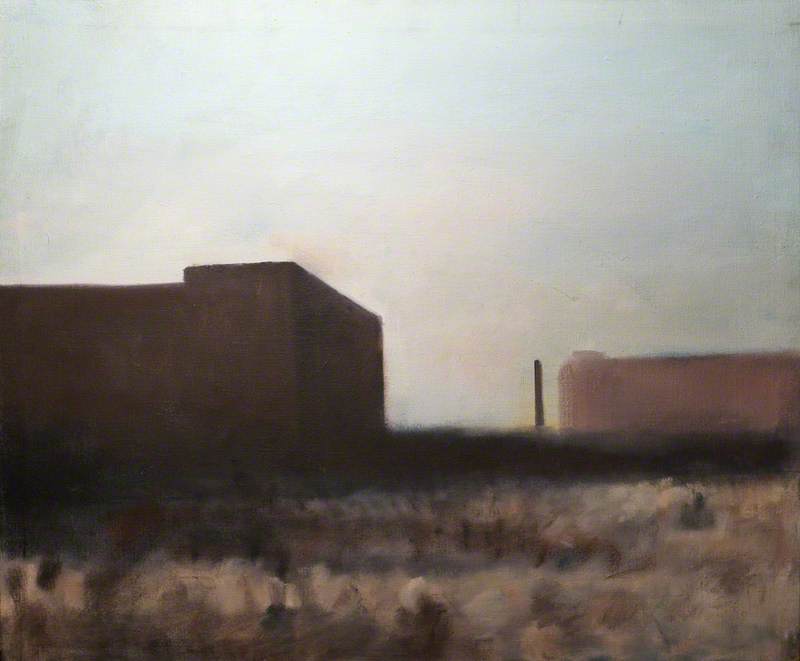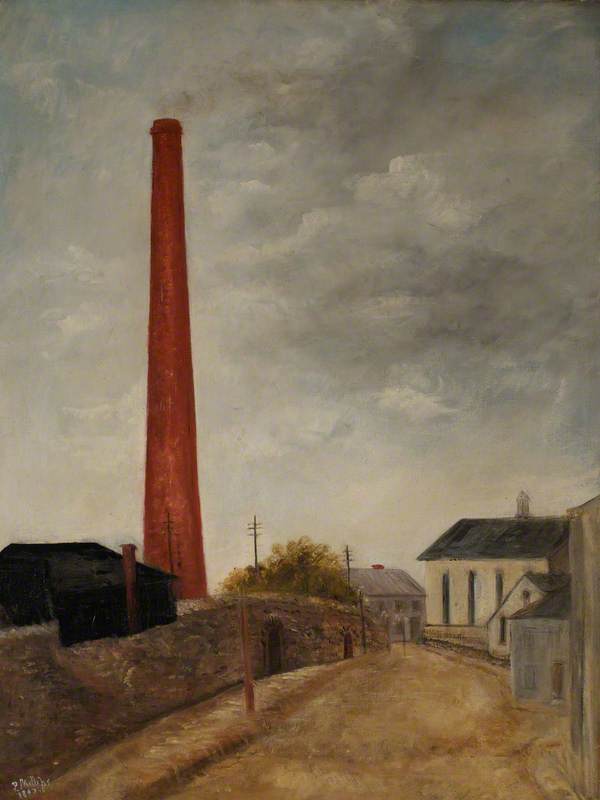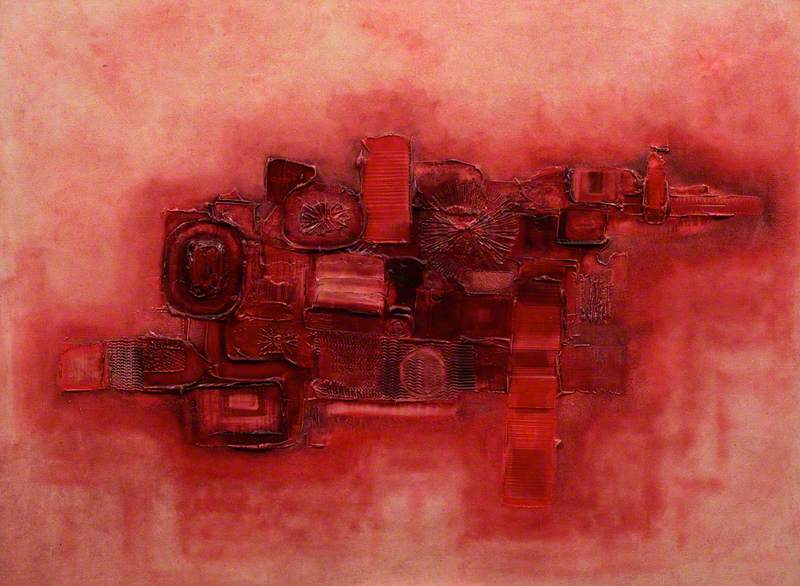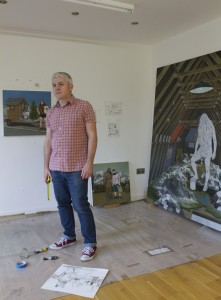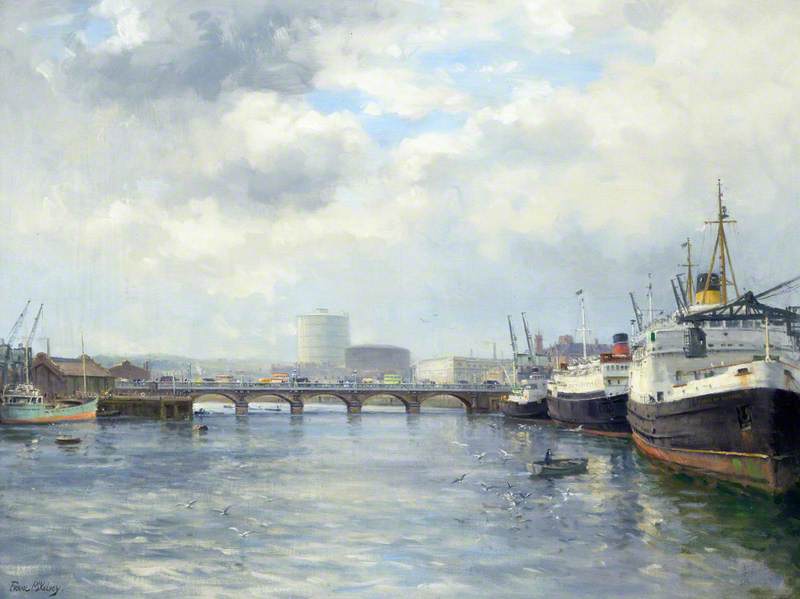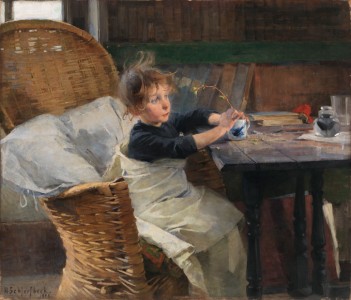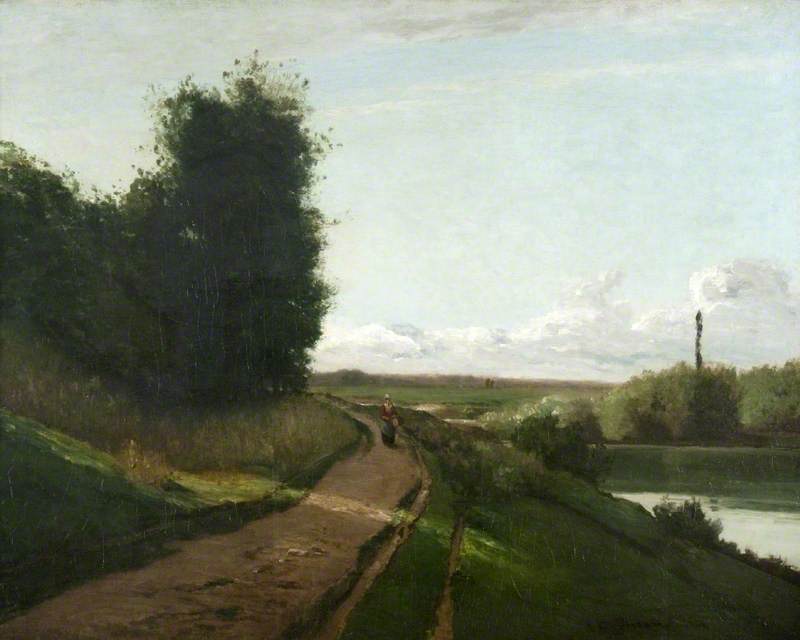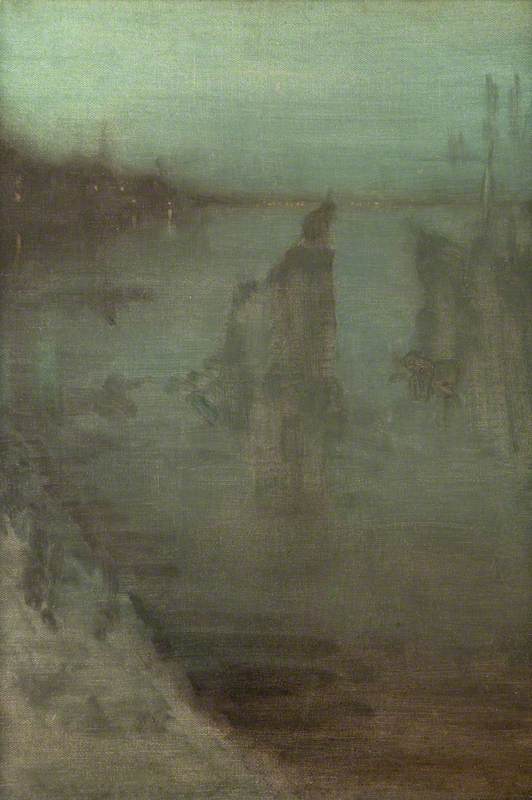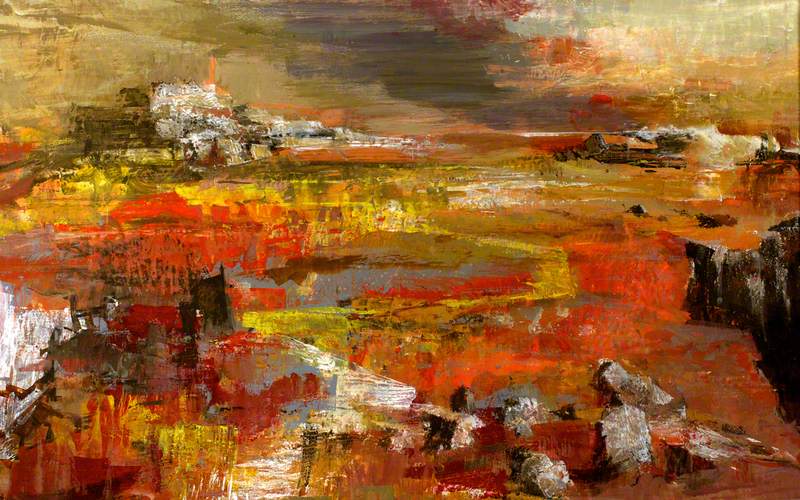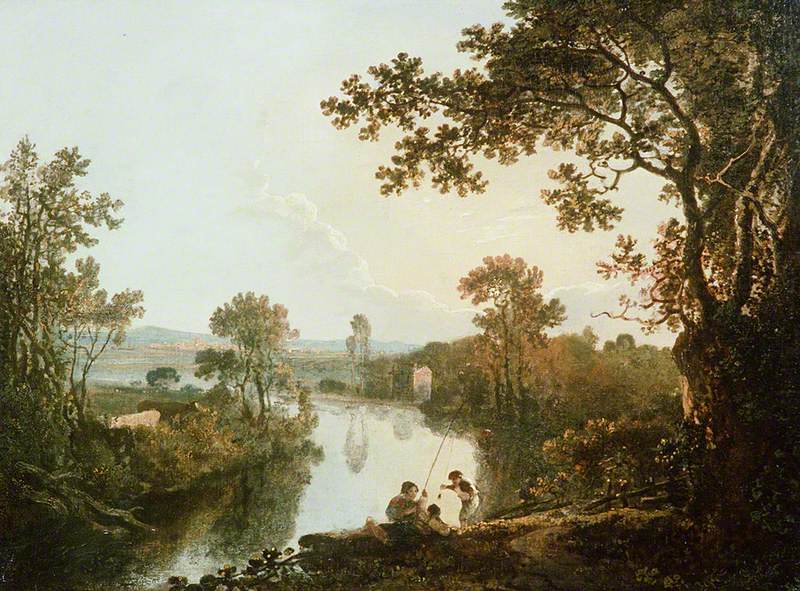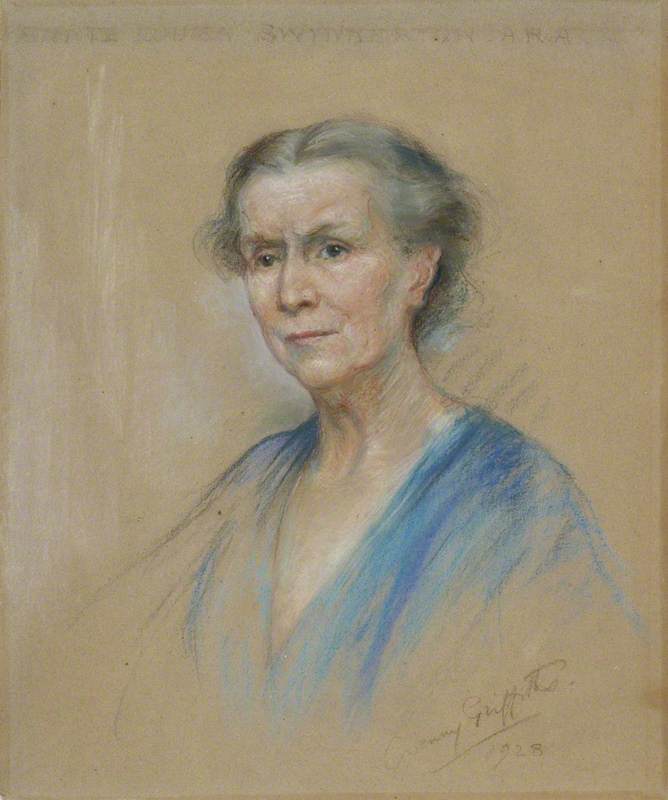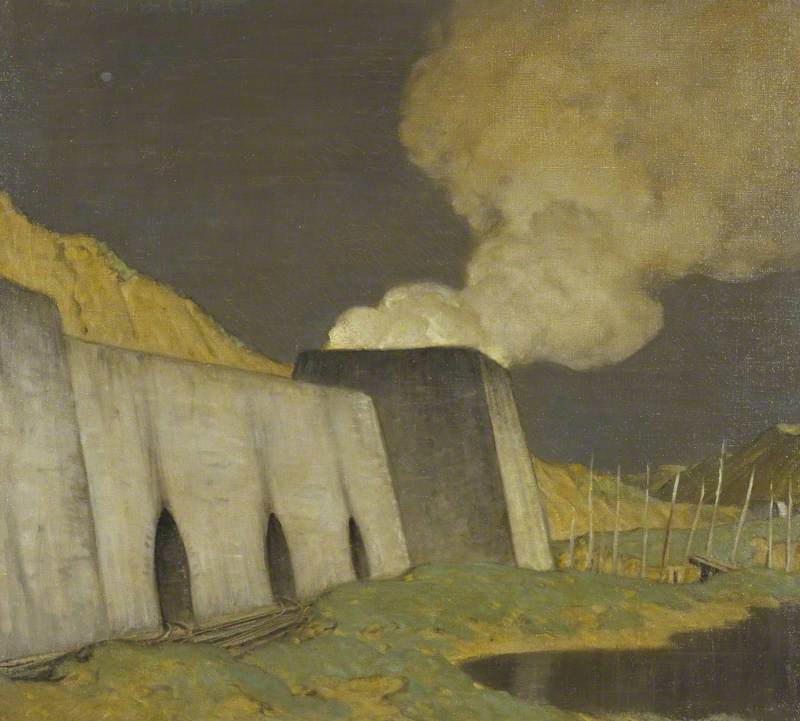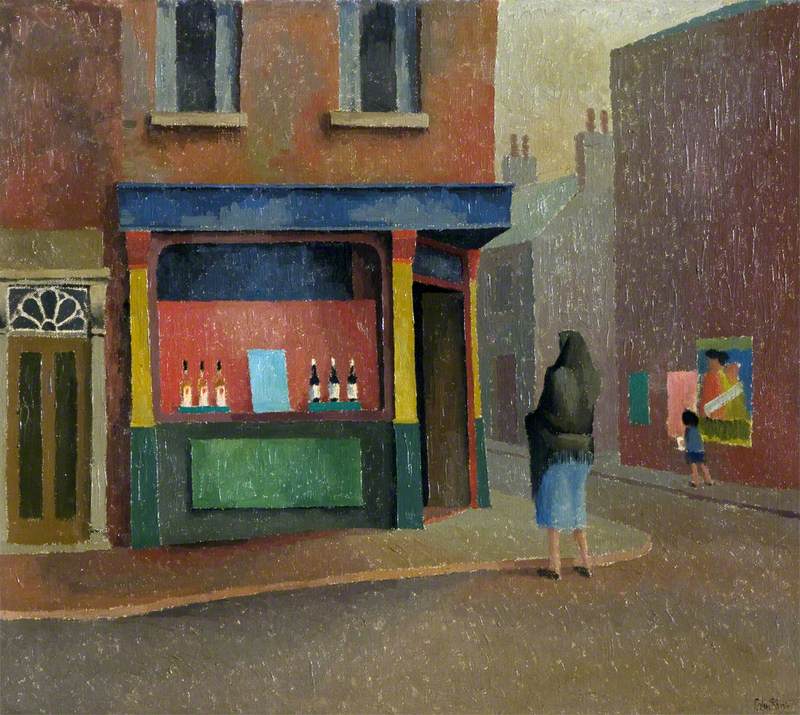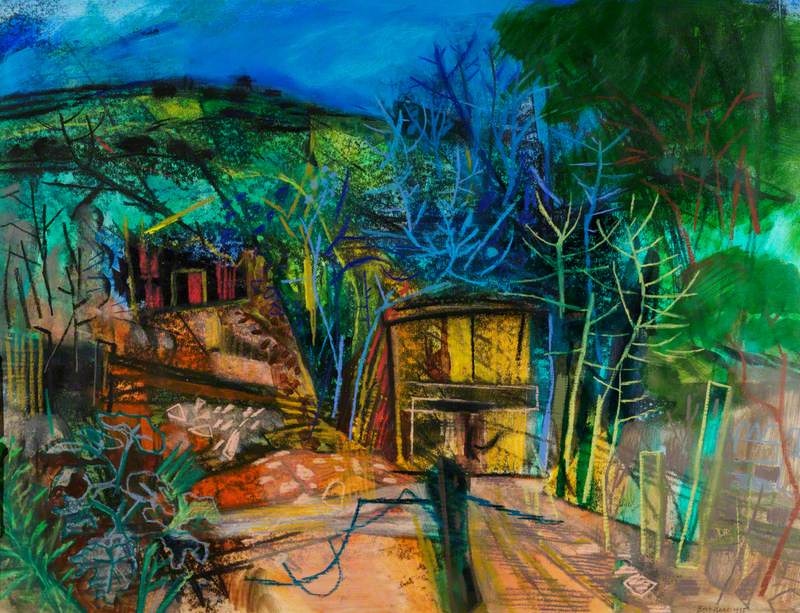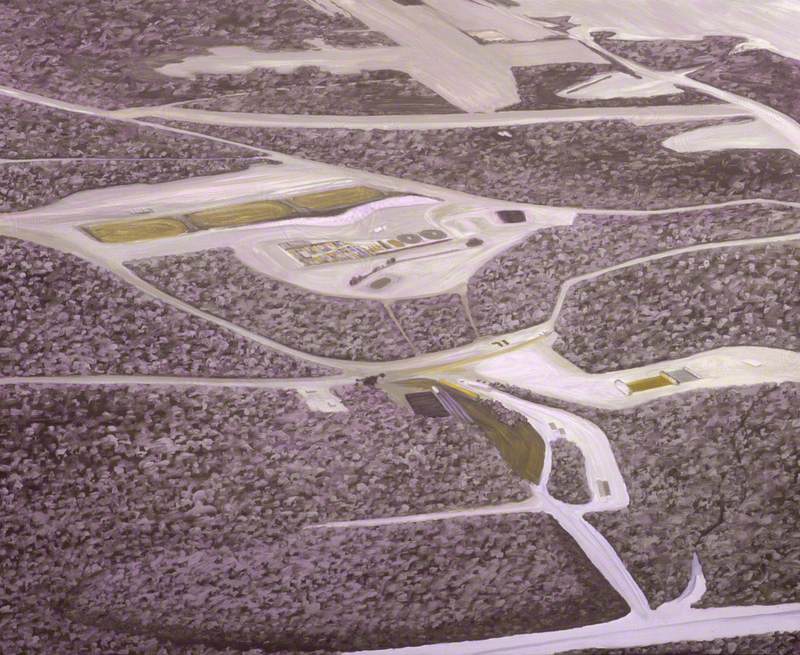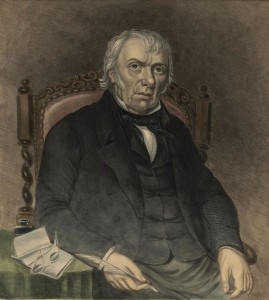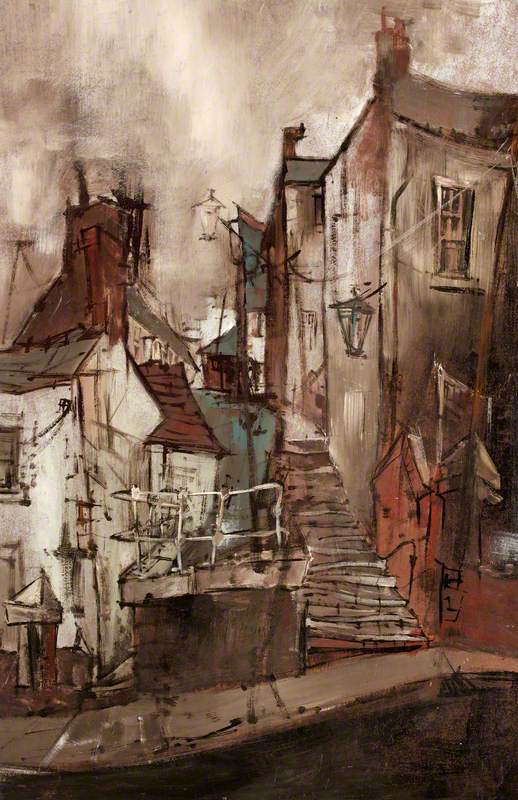Industrial Landscape, painted by Stephen Meyler around 1980, depicts a brooding rectangular building, behind which, to the right, lurks another and a chimney stack between them. The viewer is separated from the first by a field of indiscernible distance, which is repeated in the separation between the two buildings. Their purpose, possibly some warehouse or other, isn't clear, except as signifiers of industry within a landscape.
The buildings are solid, stagnant, while the field in front is blurred as if in motion. It presents the familiar experience of viewing such a landscape from a moving train. Meyler, a Llanelli-born artist, would have been familiar with the landscapes of industry that I too grew up with. Despite the lack of distinguishing features, the work bears a striking resemblance to the Trostre tinworks, on the outskirts of the town, as I've too-often experienced through the window of a train in motion.
Stephen Meyler began his training as an artist at the Dyfed College of Art, Carmarthenshire, 1975, after which he trained at the Epsom School of Art – closed in 1995, and in 2005 merged with the Kent Institute of Art & Design to form what is now UCA – where he gained his diploma. In 1979 he began working as an artist full time. That's about all that is publicly known of him – except his art depicts 'the politics of alienation or the depersonalisation of the individual in a large and bureaucratic society.'
Broadly speaking, political alienation conceptually falls into two categories: political incapability and discontentment. Marvin E. Olsen wrote, 'in the first instance, alienation is forced upon the individual by his environment, whereas in the second case it is voluntarily chosen by him.' Could it be considered a choice, to feel discontent with one's environment, for aesthetic reasons? How different, really, are these two categories from each other?
Another oil painting, by J. G. Bevan, an amateur artist from Llanelli, is of a scene that doesn't exist anymore, or maybe never did. Deserted Farm, Coedcae, painted sometime between 1955 and 1965, depicts a dilapidated farmhouse complete with an outhouse's collapsing roof, elsewhere empty or broken windows. Coedcae is where my comprehensive school stands, and where I spent five dreary school years.
Deserted Farm, Coedcae
1955–1965
J. G. Bevan (active 1950s–1960s) 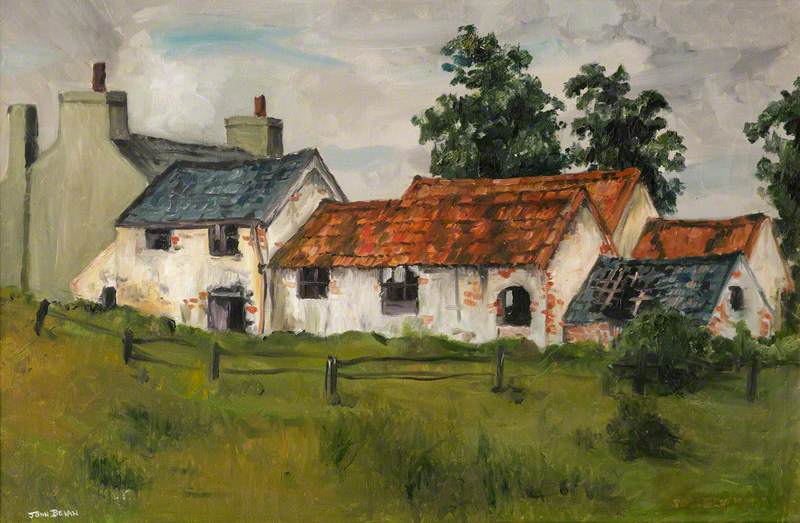
'Coedcae' generally refers to a wooded area – it literally translates to 'a field of trees' (coed = trees, cae = a field) – and is related to the word 'ffridd', which, in north Walian dialect, is 'land without borders'. Before Coedcae Comprehensive was built in the early 1900s, it was likely the area was predominantly wooded, or a zone in which trees, grass and vegetation cohabited.
Aside from the school and Coedcae field, where rugby and football are played by children, the area is largely residential. It's unsure where a farm may have been located, especially during the 1950s and 1960s, and no records, to the best of my knowledge, exist of it.
This lack of history presents a fracturing of reality regarding the work and its context. If we were to suggest the painted landscape was fictitious, could we argue it's easier to envision a scene of decay and dilapidation, rather than hopeful, flourishing futures? Bevan's Deserted Farm, Coedcae is not dissimilar to Meyler's vision of industry in Industrial Landscape – not bleak, but bleary.
While the farmhouse is deserted within its environment, the presence of decay makes it far from static, as does the suggestion of movement of nature in Meyler's painting. Time passes, and nature reclaims all.
This fascination with the zone between industrial and rural continues to fascinate other Llanelli artists. Martha Esther Pat Phillips' painting Stac Fawr (Big Stack) of the tallest factory chimney in Llanelli at the time, dominates the scene, thick and smoggy with smoke that would have passed over the surrounding area. Before the presence of industry dominating the sky, rural folk would have been able to see the sky for what it was. Would the smoke's occupation of the sky lead to a sense of alienation?
In a deeply religious town like Llanelli – a major centre of Welsh Nonconformism in the nineteenth and twentieth centuries, which would have had over 20 chapels at the time of painting, in 1897 – would the pollution of the sky have felt like an extra barrier between the townsfolk and their God?
Stac Fawr stood adjacent to Copperworks Road, Llanelli, and was partially demolished in 1928 – the base and foundations of this imposing chimney stack were removed in 1966. The site is now purely residential, with little or no evidence of Llanelli's history as once being responsible for half the world's production of tinplate. The politics of demolition, and the business of housing production, breed alienation – from one's history and sense of identity within one's surroundings.
Philip Michael Evans, another amateur artist from Llanelli working in the second half of the twentieth century, painted Armageddon: a painting which is said to represent nuclear war. The work is richer in colour and conveys a frenetic energy that the other works considered here only suggest.
We may look at this work in comparison and not see a connection, but what they do have in common is anxiety for the future. The stagnation of copper and tin industry within Llanelli, and the looming fear of warfare – which in turn requires a boom in the manufacturing and industries of war – combine to express the anxiety and alienation of the individual within the works.
What could be a more effective conclusion, than ending with The Stranger by Julian Peter Charles? Painted in 1962, this portrait of the heads and shoulders of two people, in predominantly murky reds and browns, turns the view onto that of the self. Within the engrossment of futures never happened, and pasts half-remembered, is one's murky understanding of the self.
Who's to say for certain why Llanelli's art is so preoccupied with the alienation of individuals and whole communities, but in these works it certainly seems to be linked with the stagnation of industry and livelihood within the town, which it has never recovered from. Between the time loops of one war or disaster to another, is a stagnated, liminal zone in which a person, or indeed an entire town, can find themselves adrift.
Joshua Jones, writer
This content was supported by Welsh Government funding
Further reading
Marvin E. Olsen, 'Two Categories of Political Alienation' Social Forces, March 1969
Llanelli Community Heritage, Chimney Stacks of the Industrial Revolution
